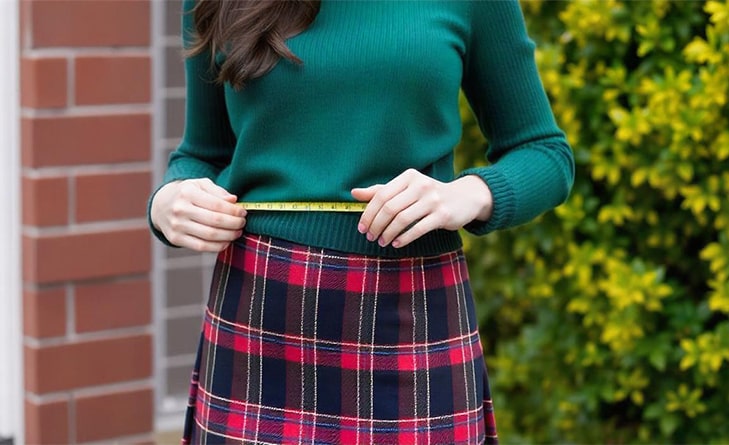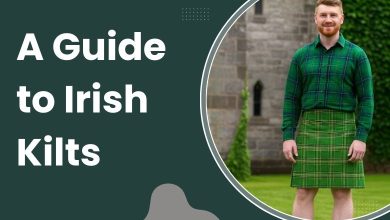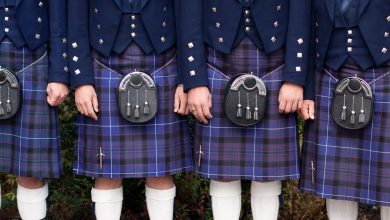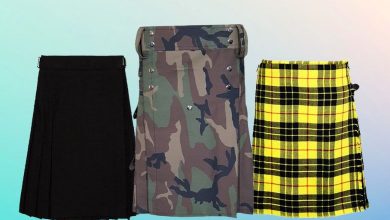How to Measure a kilt for a Woman

Kilts been celebrated as a symbol of Scottish heritage and style. Now they are no longer reserved solely for men. Women’s kilts are making a vibrant statement blending tradition with modern flair. But it’s necessary to know how to measure a kilt correctly is essential. Finding that perfect fit can transform your look. So, let’s delve into the art of measuring a kilt specifically tailored for women.
The Importance of Accurately Measuring a Kilt
Accurate measurements are for women kilts. A well-fitted kilt not only enhances comfort but also elevates style.
Kilts are designed to hang and drape in a specific way, which means every inch counts. A miscalculation can lead to awkward fit.
Take the time to measure correctly. Just ensure that your kilt sits precisely where it should—around the waist and hips. This attention helps achieve that classic silhouette associated with traditional Scottish attire.
Additionally, a properly measured kilt allows for ease of movement. Whether you’re dancing at a ceilidh or simply walking about town, freedom is key.
Moreover, investing in accurate measurements saves money in the long run. It reduces the likelihood of costly alterations later on if adjustments need to be made after purchase.
Steps to Measure a Kilt for a Woman
Measuring a kilt for a woman requires precision and care. Start with the waist measurement. Wrap a measuring tape around the natural waistline. Make ensure it’s level all around.
Next, determine the hip size. Measure at the fullest part of your hips to ensure ample room for movement and comfort.
For length, decide where you want your kilt to fall. Typically, this ranges from just above the knee to mid-calf. Stand straight while measuring from your waist down to your desired hemline.
Consider any additional features like pockets or pleats that might affect sizing.
Taking these steps will help create an accurate fit tailored perfectly to individual body shapes and preferences!
Tips for Getting the Perfect Fit
Aiming for the perfect fit and comfort should be your top priority. Choose a kilt that allows movement without constriction.
Take note of where you want the waistband to sit. For a classic look, it typically rests just above the hips. Adjusting this height can change both style and comfort levels.
Don’t overlook length! The ideal kilt should fall around mid-knee or slightly above, depending on personal preference and occasion.
Consider layering when trying on different styles. Wearing tights or leggings might affect how the fabric drapes against your body.
Always try walking in your chosen kilt before making a final decision. You’ll want to ensure it feels as good in motion as it does standing still.
Choosing the Right Fabric and Style
When selecting a kilt for woman fabric plays a crucial role in both comfort and style. Traditional wool offers warmth and durability. It makes it ideal for colder climates. If you’re looking for something lighter cotton or linen can be excellent choices for warmer days.
Color patterns are equally important. Tartan designs bring that classic Scottish flair, while solid colors provide versatility. Consider your personal style—do you prefer bold prints or understated elegance?
The length of the kilt also matters. Shorter lengths might suit casual outings, while longer styles often exude sophistication. Think about where you’ll wear it most to guide your choice.
Don’t forget about additional features like pockets or embellishments. These details can enhance functionality without compromising on aesthetics. Choose wisely to ensure your kilt reflects both tradition and individual expression.
Alteration Options for an Ill-Fitting Kilt
If you find your kilt doesn’t fit quite right. There are several alteration options available to ensure it flatters your figure.
One of most common adjustments is resizing waist. If it’s too loose or tight a skilled tailor can take in or let out fabric for that perfect snug feel.
You might also consider adjusting the length. A longer kilt can be hemmed, while a shorter style may require additional fabric if you’re looking for more coverage.
For those with specific preferences on pleats. It alters their placement can enhance both comfort and style. It’s all about achieving that desired look and feel.
Always consult with a professional tailor who specializes in kilts. Their expertise will make sure any changes respect the garment’s structure and traditional design elements.
Conclusion
Measuring a kilt for a woman is an essential step in ensuring both comfort and style. With the right measurements you can achieve that perfect fit. It enhances your freedom of movement. It’s about selecting the fabric and style that reflect your personality.
If adjustments are necessary after fitting your kilt, consider professional alterations to ensure everything sits just right. The beauty of kilts lies in their versatility and individuality; embrace this journey as part of expressing yourself through fashion.
With these tips and techniques at hand, measuring a kilt for a woman doesn’t have to be overwhelming. Instead, view it as an opportunity to create something uniquely yours—a garment steeped in tradition yet tailored specifically for you.




